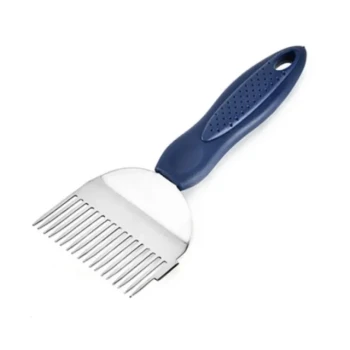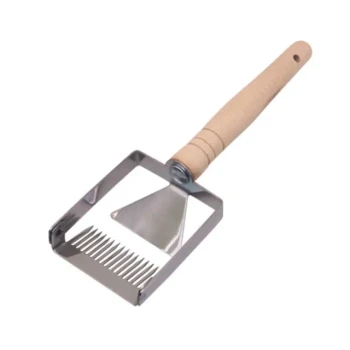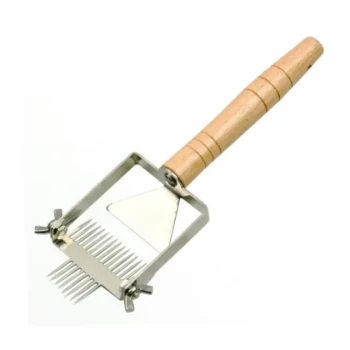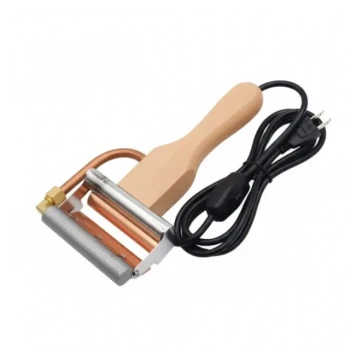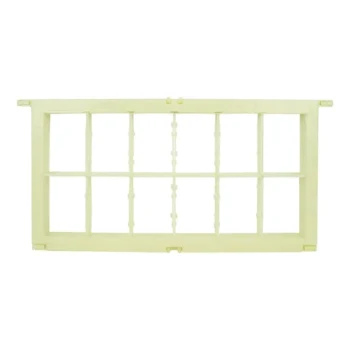At its core, the Flow Hive is designed to improve bee health by dramatically reducing the stress and disruption caused during honey harvesting. Unlike traditional methods that require opening the hive, smoking the bees, and physically removing frames, the Flow Hive allows honey to be drained directly without disturbing the colony's internal environment.
The primary health benefit of a Flow Hive is isolated to the honey extraction process. By minimizing this single, high-stress event, the hive can help maintain colony stability, but it does not replace the need for comprehensive beekeeping knowledge and regular hive management.
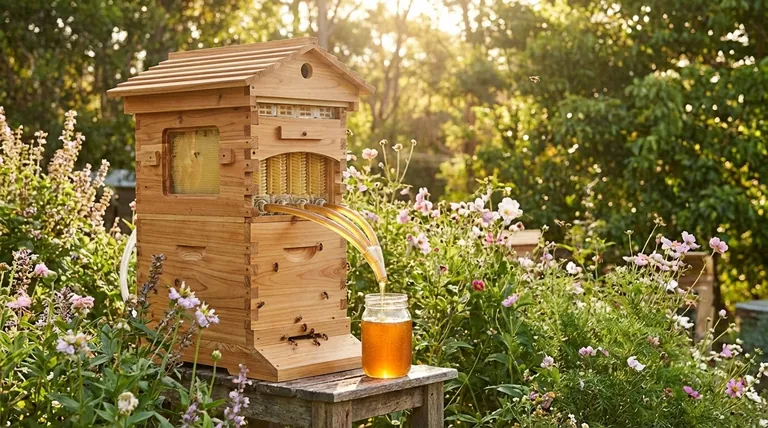
The Core Principle: Minimizing Harvest-Day Stress
To understand the Flow Hive's benefit, you must first understand the stress of a traditional harvest. This context is key to appreciating the problem the Flow Hive was designed to solve.
How Traditional Harvesting Disturbs a Colony
A conventional honey harvest is an invasive event. Beekeepers must open the hive, often using smoke to pacify the bees, which disrupts their communication and triggers a defensive response.
Frames are physically removed, bees are brushed or blown off, and the entire colony structure is disturbed for a significant period. This can lead to stress, defensive behavior, and a temporary halt in the hive's productivity.
The Flow Hive's Gentle Extraction Mechanism
The Flow Hive replaces standard honey frames (supers) with specially designed frames containing partially formed honeycomb cells. The bees complete these cells with their own wax and fill them with honey.
When a beekeeper turns a key, a mechanism inside the frame splits the cells vertically. This creates channels that allow the honey to flow downward, out of the hive through a spout, all while the hive remains sealed and the bees are undisturbed.
The Direct Impact on Bee Health
By keeping the hive closed, the Flow Hive avoids triggering the colony's defense response. The bees are not agitated, the sensitive brood nest is not exposed, and the internal temperature and humidity remain stable.
This allows the colony to continue its work uninterrupted. The reduction in stress contributes directly to the overall resilience and health of the hive, as stressed bees are more susceptible to disease and pests.
Secondary Benefits and Broader Context
While the harvesting method is the primary advantage, the design offers other, more subtle benefits.
Enhanced, Non-Invasive Observation
Most Flow Hives include observation windows on the side of the honey supers. This allows a beekeeper to gauge the colony's progress in filling the frames without opening the hive.
Seeing when the frames are full helps determine the right time to harvest, avoiding unnecessary inspections and disturbances.
Promoting a Bee-Centric Mindset
The introduction of the Flow Hive has sparked widespread conversation about the importance of bee welfare in beekeeping practices.
It has encouraged both new and traditional beekeepers to re-evaluate methods and prioritize low-stress techniques, contributing to a broader cultural shift towards more sustainable beekeeping.
Understanding the Trade-offs and Common Misconceptions
The Flow Hive's benefits are specific and should not be misconstrued as a solution for all beekeeping challenges. Objectivity here is critical for the health of your bees.
Harvesting is Only One Part of Beekeeping
The marketing for the Flow Hive rightly focuses on its revolutionary harvesting system. However, this can mislead newcomers into believing that all of beekeeping is now "easy."
Honey extraction is only one task among many. The Flow Hive does not simplify or eliminate the most critical aspects of hive husbandry.
The Need for Regular Inspections Remains
A responsible beekeeper must still open the hive to perform essential health checks. This includes inspecting the brood chamber (where the queen lays eggs) for signs of disease like Foulbrood.
Most importantly, it requires checking for and managing Varroa mites, a devastating parasite that is one of the single biggest threats to honeybee health worldwide. The Flow Hive offers no built-in solution for mite management.
The Risk of Neglect
The greatest risk to bee health associated with the Flow Hive is the potential for neglect. A beekeeper who believes the hive is self-managing may fail to perform the necessary inspections.
This can lead to unchecked disease and mite infestations that will inevitably destroy the colony. A "hands-off" approach to beekeeping is a direct path to a dead hive, regardless of the equipment used.
Making the Right Choice for Your Goal
Ultimately, the Flow Hive is a tool. Its impact on bee health is determined entirely by the beekeeper who uses it.
- If your primary focus is reducing colony stress during honey harvest: The Flow Hive is an excellent tool that achieves this goal better than any other system.
- If your primary focus is finding an "easy" or "hands-off" way to keep bees: This is a dangerous misconception. The Flow Hive only simplifies one task, and the belief that it makes all beekeeping easy can lead to hive neglect.
- If your primary focus is overall bee health and colony survival: The specific hive you choose is less important than your commitment to learning and practicing diligent hive management, especially regular health inspections and mite control.
The best tool for ensuring bee health will always be an educated, observant, and attentive beekeeper.
Summary Table:
| Benefit | How It Works | Key Consideration |
|---|---|---|
| Reduced Harvest Stress | Honey is drained without opening the hive, avoiding bee agitation. | Does not eliminate the need for other essential hive inspections. |
| Stable Hive Environment | Internal temperature and humidity remain constant during extraction. | Colony health still depends on proactive pest and disease management. |
| Non-Invasive Observation | Observation windows allow progress checks without disturbance. | The system is a tool, not a replacement for beekeeping knowledge. |
Ready to prioritize bee health in your apiary?
HONESTBEE supplies commercial apiaries and beekeeping equipment distributors with the durable, high-quality supplies needed for effective hive management—from mite control treatments to essential inspection tools. The right equipment supports the diligent care that keeps colonies thriving.
Contact our wholesale team today to discuss your apiary's needs.
Visual Guide
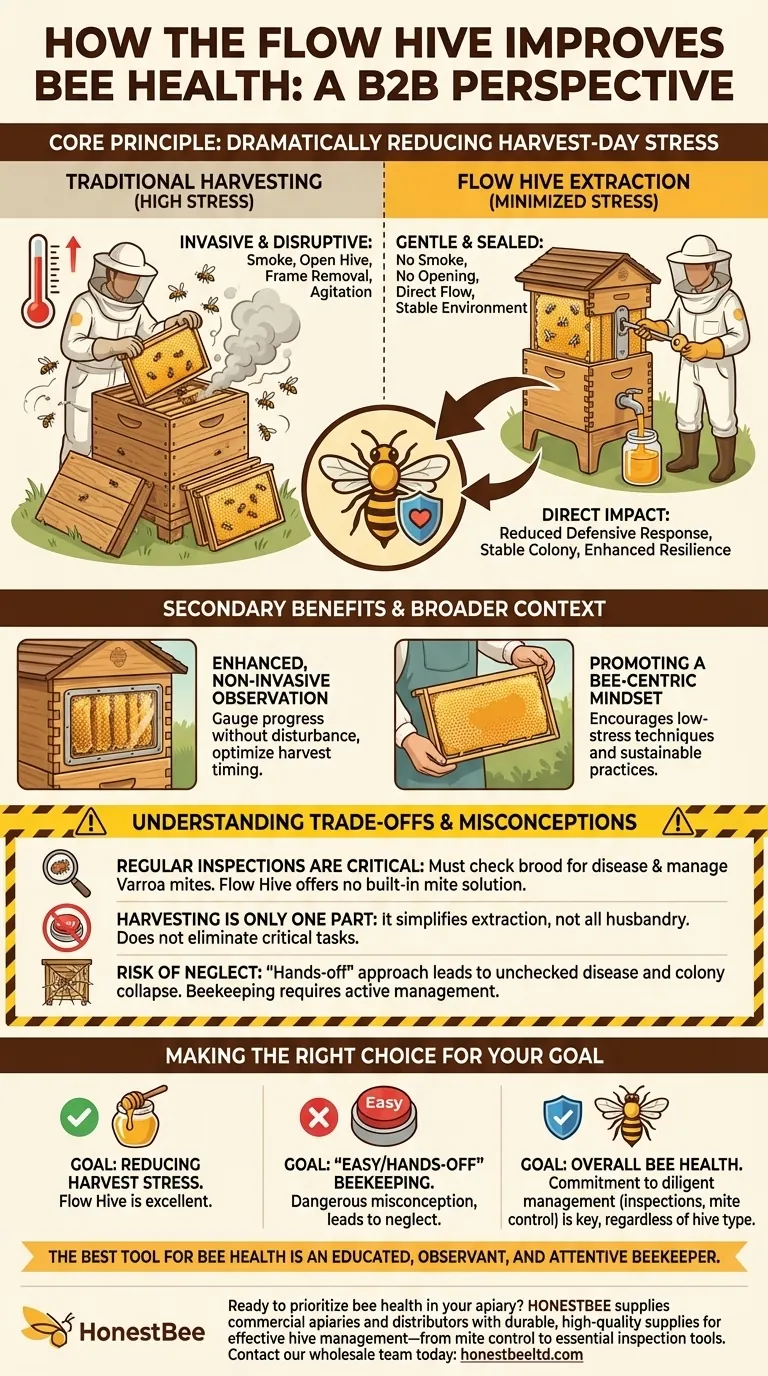
Related Products
- Automatic Honey Flow Beehive 4 Frame Mini Hive for Beekeeping
- HONESTBEE 72 Frame Industrial Electric Honey Extractor for Beekeeping
- Electric 8 Frame Honey Spinner Extractor Equipment for Beekeeping
- Stainless Steel Manual 8 Frame Radial Honey Extractor Machine for Beehives
- HONESTBEE 4 Frame Manual Self Reversing Honey Extractor for Beekeeping
People Also Ask
- What are the advantages of using an Auto Flow Hive? Experience Gentle, On-Tap Honey Harvesting
- What are the advantages of using a Flow Hive? Simplifying Harvesting for Modern Beekeepers
- How long does it take to get honey from a Flow Hive? Fast Harvesting Explained
- What are the benefits of a Flow Hive? Revolutionize Your Harvest with Ease and Care
- What is the selling point of the Flow Hive? A Revolutionary, Stress-Free Honey Harvest









